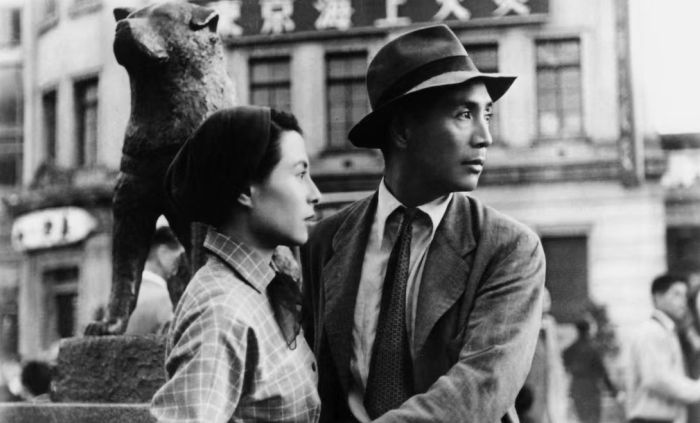Reminder from FTChinese.com: If you are interested in the content of FTChinese.com, please search for “FTChinese.com” in the Apple App Store or Huawei App Store, download the official app of FTChinese.com, and pay for subscription. Happy using!
The ill-fated A Chun in “The Generation of West Cranes”; the unloved Miss A You in “Miss A You”; the tearful Aqi Po in “Wangxiang”… This is a Japanese actress The screen impression that Tanaka Kinyo has left on most people. Little known is that the woman who often collaborated with Japanese directors such as Ozu Yasujiro, Kinoshita Keisuke and Shimizu Hiroshi and was selected as one of the “Top 10 Most Beautiful and Charismatic Actresses” in Japan’s history is also a fruitful woman. ‘s director.
In mid-August, the Edinburgh International Film Festival was held in Edinburgh, the capital of Scotland. In its tribute to the classics section, six films directed by Kinyo Tanaka were screened. The themes of these six films involve the scars of war, social unrest and modernization, and all of them are presented through the perspective of women. This unprecedented concentration of screenings was a “feast for the eyes”, and I also met Mark Cousins, a Scottish filmmaker who came to check in just like me. With the words “Tanaka Kenyo” tattooed on his arm, he gushed to me to express his love for the female director:
“About 15 years ago, I saw Kinyo Tanaka’s “Love Letter,” and I fell in love with her films. Her films are very inspiring, not only did she open up a path for women to direct, but, her films It can also allow men to penetrate into women’s hearts and understand the complexity of their choices. She pays great attention to the visual effects of the picture, and the use of close-up shots and the use of eyes are very modern. Directed by Tanaka Kinyo On a par with mainstream American directors of her generation, such as William Wheeler. Of course, she was also inspired by some American films.”
It should be noted that Kinyo Tanaka is an actor first and foremost. She has had a long and illustrious acting career that dates back to the silent film era. Kinyo Tanaka was born in Shimonoseki, Japan in 1909 and grew up in Osaka. Due to the untimely death of his father and the financial difficulties of his family, Kinyo Tanaka started working before finishing primary school. She first appeared on the movie screen in 1924, with a role in Nomura Hotei’s “The Genroku Girl” and, soon after, a leading role in Shimizu’s “Village Ranch”. In 1927, Kinyo Tanaka became a box-office star with his excellent performance in “The Shameful Dream” directed by Heinosuke Gosho. In the 1940s, Kinyo Tanaka entered the peak of her career and is regarded as Japan’s first female movie star.
In her 52-year acting career, Kinyo Tanaka has starred in more than 200 films. Most of the characters she plays are kind and innocent women. They often go through hardships and have great perseverance and strong will, but in the end they have to accept The arrangement of fate. Because of these “suffering women” images she portrays, people often stereotype her and associate her with “poor women.” In fact, in his later years, Kinyo Tanaka played a number of challenging and sometimes unflattering female roles, such as prostitutes, old mothers, and maids.
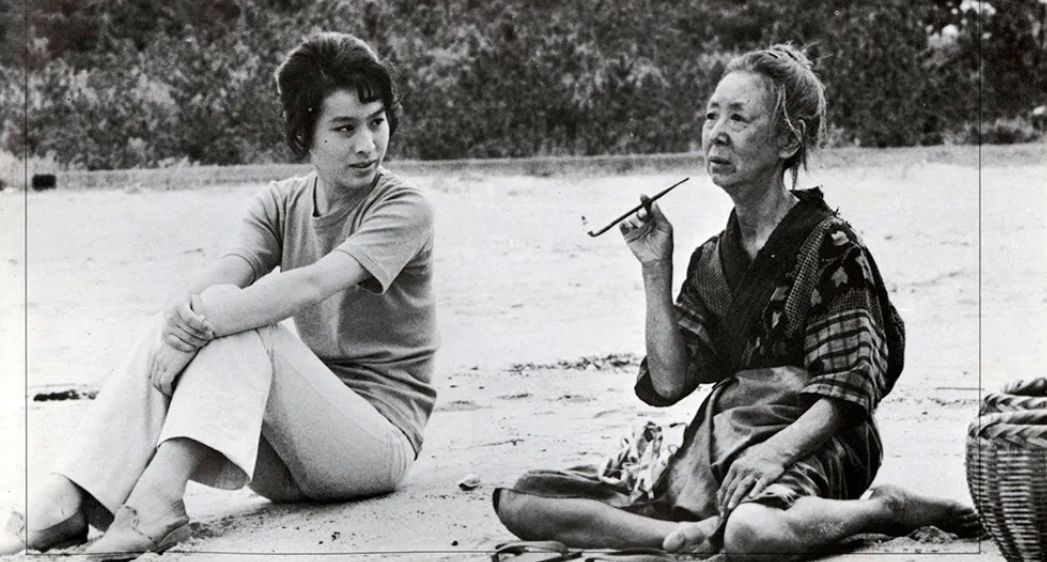 In his later years, Tanaka Kinyo (right) performed in the film “Wangxiang”
In his later years, Tanaka Kinyo (right) performed in the film “Wangxiang”After World War II, Japan rose rapidly from a devastated and defeated country, and the social status of Japanese women also underwent a fundamental change. At the same time, influenced by that era, Japanese women’s awareness of independence was awakening, and Tanaka Kinyo himself also developed a strong desire to create. So, she seized this opportunity and transformed herself into a director. She once said: “I never felt there was anything wrong with being an actor. But I loved movies and realized that I couldn’t hold back my desire to be a film director. I guess my ambitions surfaced.”
However, some people pointed out that Tanaka Kinyo changed to be a director as a choice she had to make. At that time, Kinyo Tanaka had just returned from the United States as a Japan-US friendly envoy, and some of her apparently Westernized behaviors caused huge controversy in the public opinion circle. This left her feeling depressed and even suicidal. Tanaka Kinyo is not wrong in itself. If it is replaced by another lively and lovely actress, the public may only find her performance interesting and will not be on the line. Because previously, her movie image has been associated with a tough, hard-working character, people have expectations for her and cannot accept the sudden change in her “painting style”. These negative experiences made Tanaka Kinyo realize that his acting career is no longer guaranteed, so he decided to expand his career scope. Another speculation is that Tanaka Kinyo has entered the age of no confusion, and age is usually not conducive to the career development of an actress. She can only play the role of a mother, and being a director is not restricted by age, which can be regarded as a kind of resistance.
Since then, Tanaka Kinyo has directed “Love Letter” (1953), “Moon Rising” (1955), “Eternal Breast” (1955), “Wandering Princess” (1960), “Woman in the Night” (1961) and Lord Ayin (1962). The six films have different themes, each with its own characteristics.
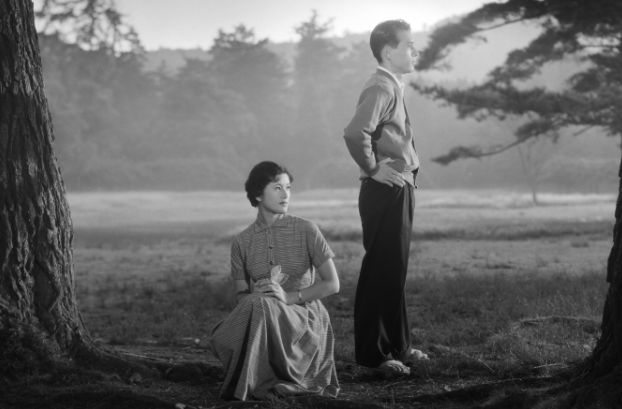 Stills of the movie “Moon Rising in the Sky”
Stills of the movie “Moon Rising in the Sky”“Love Letter” is Tanaka Kinyoro’s debut, based on a popular serial novel, the film has received critical acclaim from audiences. The film tells the story of a Japanese veteran who has been missing his lover, forced to make a living, and has to start a job writing English letters for a Japanese woman who was abandoned by American soldiers. This job brings him back to his lover and leads to a heartbreaking story. . The film explores the dislocated and chaotic society and love that resulted from the U.S. military’s entry into Japan. “Moon Rising” is a romantic light comedy. It tells the story of an old father and three daughters who live in Nara. One of the three daughters has just lost her husband, one is in no hurry to get married, and the other dreams of moving to Tokyo. The old man witnessed his daughters, under the influence of modernization, change traditional concepts and finally find their own love. “The Wandering Princess” is a large historical film. Kinyo Tanaka described the film as her Japanese version of “War and Peace” shot from a female perspective. Based on the memoirs of Puyi’s younger brother Pu Jie’s Japanese wife, Saga Hiroshi, the film presents the tortuous life of a Japanese aristocratic woman caught up in the tide of history. At the same time, this woman is deeply in love with her foreign husband. On its scale, the film is both a war epic and a sweet romance that is both heartwarming and heartbreaking. “Master Ah Yin” is a story about an infatuated woman that happened in the 16th century. The daughter of a tea master falls in love with a Christian warrior, and despite all the obstacles, she remains steadfast in her love and dedicates herself to it.
Among the six films, Mark Coxins, who is also a filmmaker, likes “The Woman in the Night” the most. Released in 1961, “The Woman in the Night” is full of realism. It is about a female worker’s experience, presenting her struggles and desire to “start over.” After the end of World War II, the Japanese government established the “Special Comfort Facilities Association”, an organization that provided sex services for the U.S. occupying forces, which claimed to recruit women to perform “urgent national missions.” It is against this background that these female workers have become women of the dust. In 1956, Japan promulgated a law prohibiting prostitution and whoring, and these women faced the situation of finding themselves and reintegrating into society. The heroine of the movie stood up again and again after being treated unfairly again and again, refusing to be swallowed up by the evil forces of society.
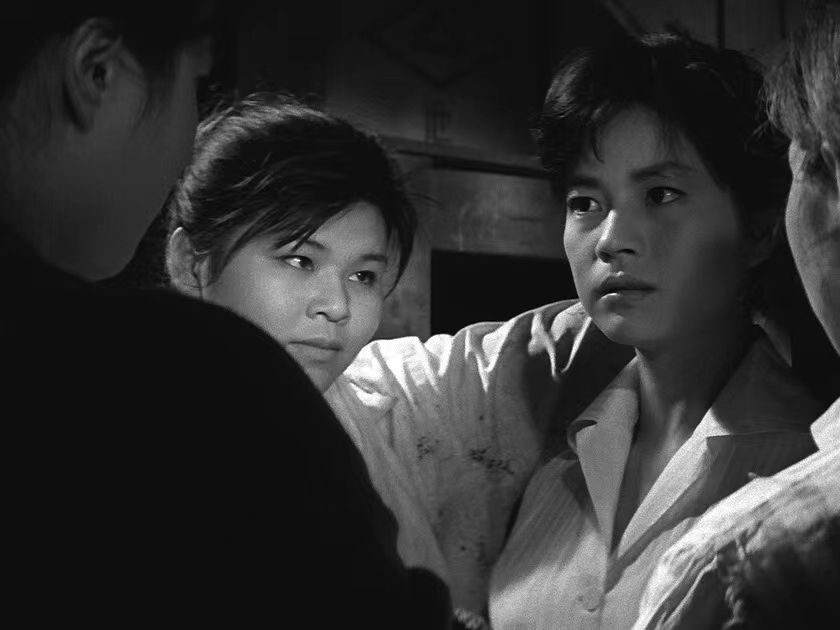 Stills of the movie “The Woman in the Night”
Stills of the movie “The Woman in the Night”The film also presents the relationship between the heroine and other sex workers, as well as the relationship between women from different social classes. What is even more commendable is that a pair of lesbian images are created in the film, which is one of the earliest films involving this group in Japanese history. As American writer John Dower, who won the Pulitzer Prize for Nonfiction, said: “In postwar Japan, the female body was not only seen as a political symbol, both socially and culturally, It also symbolizes a specific body.” In the film, the heroine finally chooses an unconventional path to freedom.
However, Japanese director Kato Sanchiro still believes that “Woman in the Night” is just a “traditional melodrama” that lacks the innovation of the film, and he has a very high evaluation of “Eternal Breast”, thinking that this film is Tanaka Kinyoro “The only laudable, masterpiece” of the director’s 6 films because it showcases “the unique heart of a woman”.
“Eternal Breast” is also my favorite movie. This film is based on the life of the famous Japanese poetess Nakajo Fumiko, and presents women’s desire and pursuit of love and sex in an extremely bold way. In the film, Nakajo left his unfaithful and drug-addicted husband and expressed his love to the man he loved without any scruples, but the other person was already the husband of a friend. However, the other party suddenly died of illness, and Nakajo Fumiko was devastated. Soon, she herself was diagnosed with advanced breast cancer and underwent a mastectomy. Fumiko of a failed marriage, desire for passion, and fear of death, Nakajo’s poems made her famous. She had a misunderstanding with a reporter who came to visit her recent situation, but the two did not know each other, and secretly fell in love with each other. Unfortunately, Nakajo Fumiko eventually died of illness at the age of 32. Her journalist friend published her posthumous work, the book of poems “The Eternal Breast”.
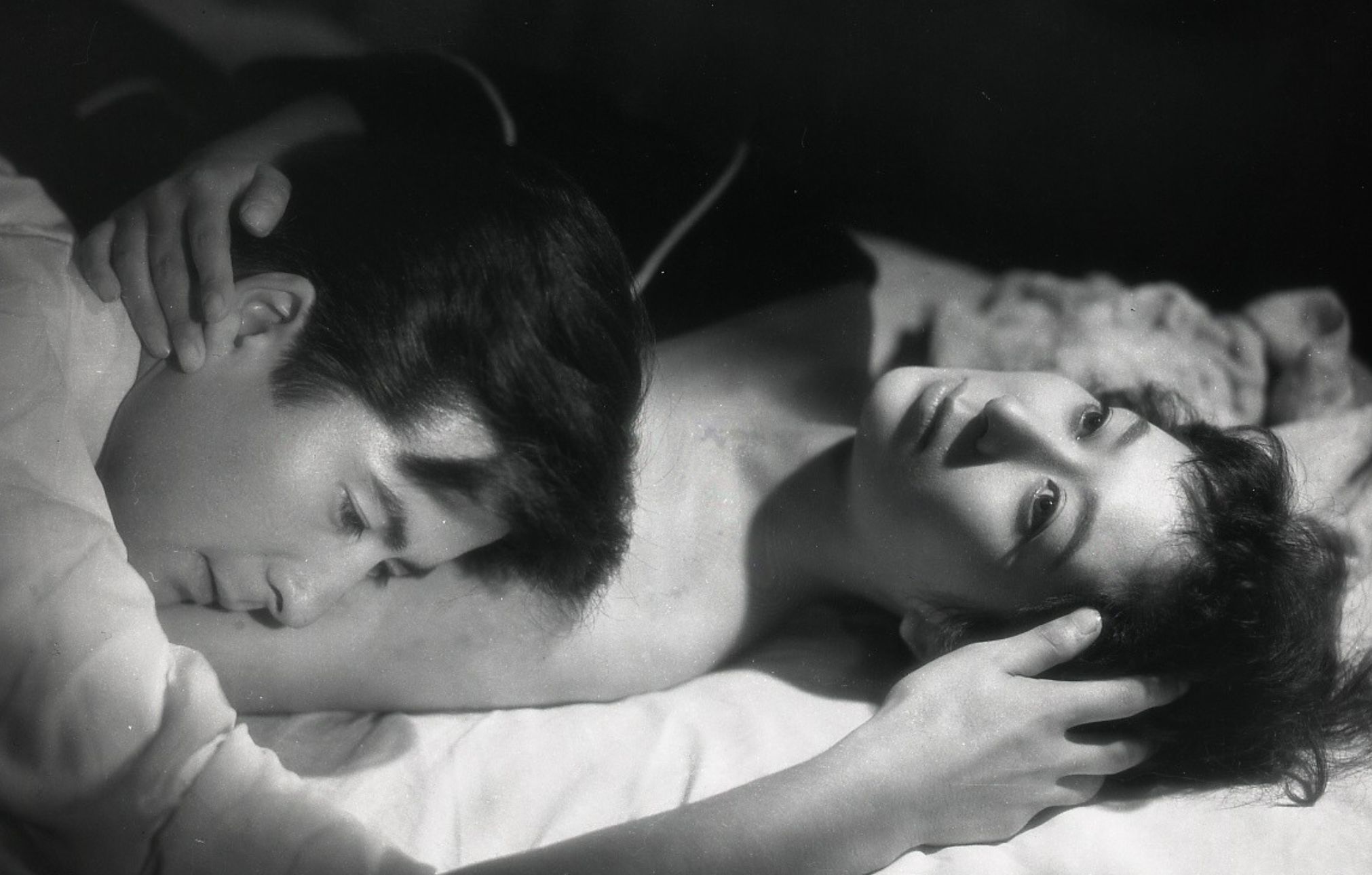 Stills of the movie “Eternal Breast”
Stills of the movie “Eternal Breast”After reading the story, Kinyo Tanaka developed deep sympathy for the poet and decided to make it into a movie… In a way, it was her spontaneous project and a movie she really wanted to make. As the Japanese poet Fuyuhiko Kitagawa commented: “In the history of Japanese film, women’s stories have always been told by male directors, and in this film, a female director successfully presented a female character who actively pursues sexual desire for the first time.” Another characteristic of Eternal Breasts is its narrative compactness, driven as little as possible by dialogue and more reliant on subtle scene transitions and tight editing. This shows that Kinyo Tanaka is very aware of the patterns and visual principles of classic Hollywood movies. In addition, Eternal Breasts often has a strong gaze and often shows the character’s back, which is as expressive as the character’s eyes.
“Eternal Breast” and “Woman in the Night” were shot six years apart. The former follows the tradition of women’s films, highlighting the heroine’s passion and sexuality, while “Master of the Night” mainly presents the heroine’s experience and social issues. Both films are groundbreaking, presenting strong-willed women and exploring female subjectivity. The main difference between the two is partly due to the dramatic shift that Japanese cinema faced in the late 1950s and early 1960s. At this point, the new trend in cinema is no longer the traditional melodramatic style, but calls for a shift to focus on social realities. For example, in December 1959, Shiro Kito, the chairman of Shochiku, announced a “break away from his melodramatic tradition” in favor of more socially meaningful stories that closely reflected the everyday lives of ordinary people. Moreover, more and more young directors are more inclined to the documentary production mode, and only shoot realistic style films. The choice of Tanaka Kinyo is probably also out of the needs of the times. Kinyo Tanaka doesn’t think melodrama is dead, noting that “it’s only natural that representations change over time”, but “as long as films manage to incorporate contemporary social issues into their themes, audiences will be happy to go to the cinema. Keep watching the melodrama”.
These 6 films are not much, but they have already established Tanaka Kinyo’s industry status as an early Japanese female director (she is not the first Japanese female director, the first is Sakane Tian Tsuruko, who directed the work for the first time in 1936). People may be curious, how did Tanaka Kinyo learn to make movies? It was pointed out that she learned to make films from watching a lot of films and acting. Tanaka Kinyo once said: “Besides acting, the only thing I know is the director, and I don’t know anything else.” Of course, she did get advice from film seniors, including Mikio Naruse, Yasujiro Ozu, and Keisuke Kinoshita. But unfortunately, this may not be a plus, because people will think she’s just a “nominee director” who owes much of her work to the studio and the gurus. As we all know, Mizoguchi Kenji firmly opposed Tanaka Kinyo as a film director, and even claimed that “Tanaka Kinyo does not have enough wisdom to become a film director”.
Kinyo Tanaka’s reputation as a film director never seems to have been as appreciated as her acting career. For many years, her films were shown only occasionally at women’s film festivals and rarely in public. Her directorship in Japanese film history is often overlooked. This situation is probably because male directors have always been at the top of the production hierarchy in Japanese film history, and they have more say. Because of sexism, ageism, and occupational hierarchies, Tanaka’s directorial achievements have undoubtedly been devalued.
This situation has only changed in the past 10 years. Whether Japanese filmmakers or international filmmakers, they suddenly discovered this female director who was almost buried in the dust of the times, the female director who said that she was “married to movies”.
(This article only represents the author’s personal views, editor email: [email protected])
